As temperatures cool and leaves turn, most of the country will need to bring their succulents indoors to protect them from damage due to freezing. Your home environment will provide a good temperature for your plants, and you will give them the water they need. But what about light? Should you use grow lights? Which are the best grow lights for succulents? How to choose between fluorescent and leds? These are important questions. So let’s get started.
Selecting Grow Lights for Succulents
In this Post We'll Cover:
{Please note, some links in this post may be affiliate links to sites that pay me a small commission if you click on the link and make a purchase. This commission is at absolutely no cost to you. I only recommend products and companies that I have worked with and truly love! ~Kat}
Want to skip straight to my recommendations for succulent grow lights?
When to Bring Succulents Inside
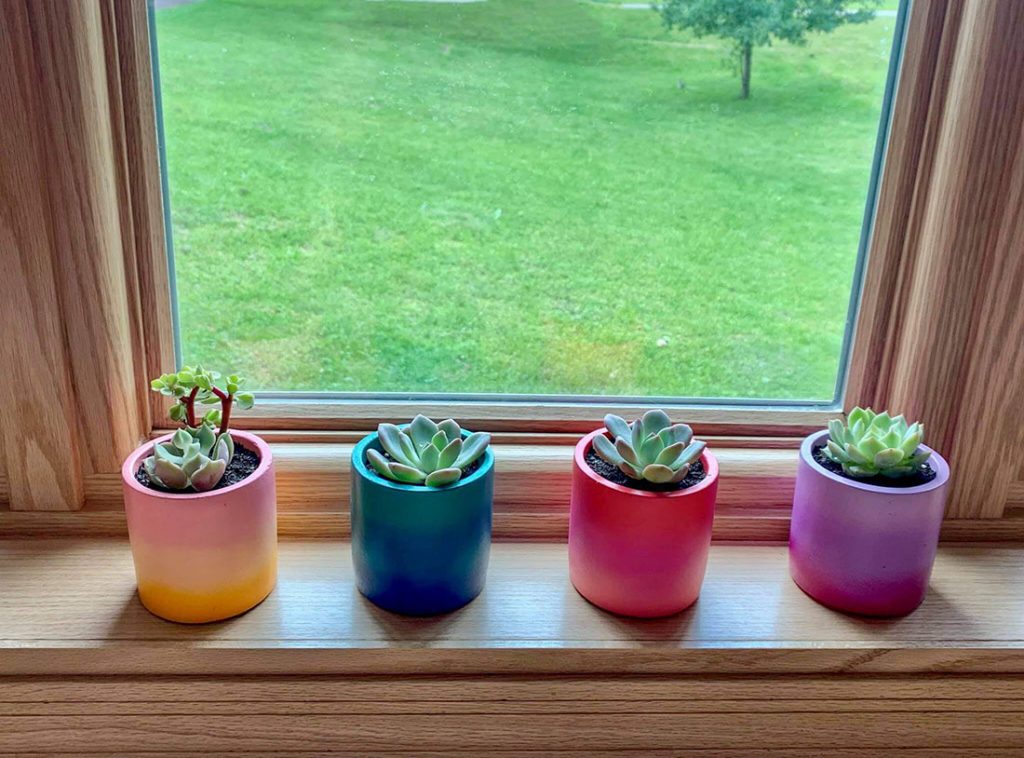
While some succulents, like Sempervivum and the hardy Sedums, will thrive outdoors year round in the coldest climates, most succulents need to be brought indoors for the winter. Many succulents will be damaged by a hard frost. Don’t risk this damage by delaying your move indoors too long. Examine your plants, remove dead foliage and any insects. Clean the pots well, and bring them indoors when the temps are dropping into the low 40’s (around 5 °C). Your indoor temperatures will be good for tender succulents. You will have to adjust your watering schedule. Your succulents will likely use less water indoors, so be alert to their changing needs. The biggest succulent care challenge you will face indoors is the lighting. While it is true that a few succulents will be happy with indoor lighting, most will need a lot more to truly thrive.
As you know, succulents need abundant light for photosynthesisPhotosynthesis (FO-to-SIN-thuh-sis) is the process plants us... More. This is the process that provides the plant with the energies it needs to grow, bloom and reproduce. Without sufficient light, your succulents will stretch and become etiolated. In severe cases, they can die from too little light, though it would likely take months. A (very) sunny window may provide a good amount of light for some succulents. Watch them carefully to see if they begin to stretch — an indication that they need more light. But what to do if they do stretch, or if you don’t have a super sunny window? Then grow lights may be your best answer.
Grow Lights for Succulents – What You Need to Know
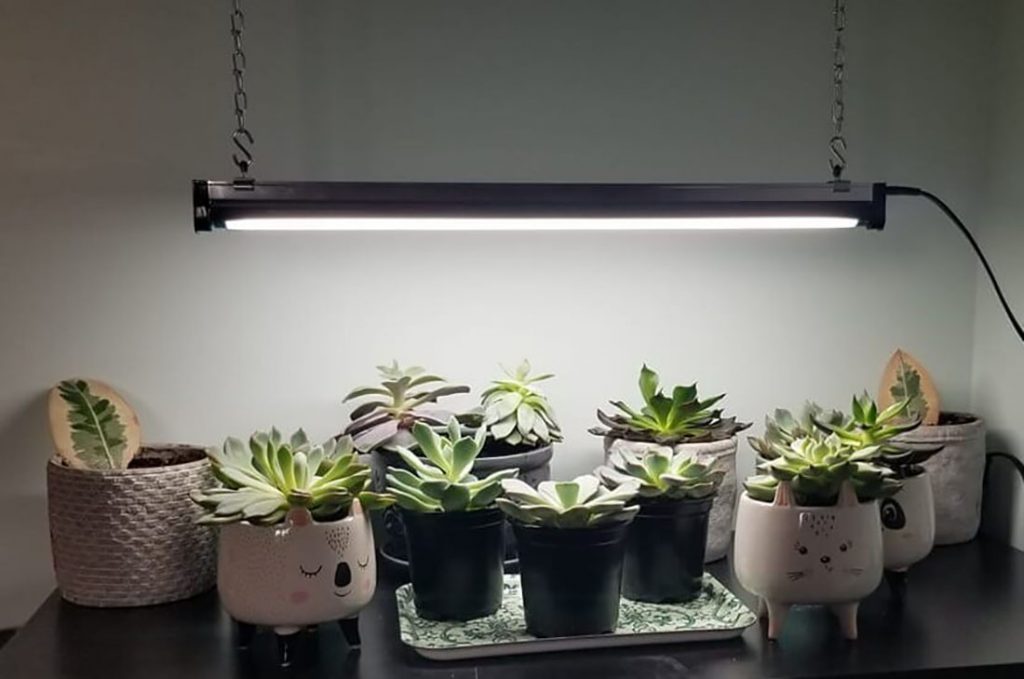
So, how to give succulents enough light to grow indoors over the winter? Grow light technology has really boomed in the last 20 years. If you have gone shopping recently, you might well feel like you should have majored in electrical engineering, or at least picked up a minor in grow lights! There are a lot of choices out there,
But for this discussion, I am just going to focus on the best two for people growing succulents indoors over the winter: Fluorescent and LEDs. Both can produce excellent results, but each is best suited to a different approach.
My home is very dark. But since I live in southern California, that isn’t much of a problem for my plants. Most of my succulents can remain outdoors year-round. The few I bring indoors for the winter just need to be kept healthy until the weather warms up again. I have made essentially a “grow tent” that keeps all of the light from my grow lights inside, so all that matters is how my plants respond to it. For this setup, I use LEDs for my succulents and have been very pleased with the results for the past 5 years. But your home is different from mine. You might want to have your succulents displayed on a shelf where you can enjoy them during the winter. In this case, the lighting you choose must also take your eyes and the look of your room into account. In this case, fluorescent grow lights would better suit your needs.
Grow Lights for Succulents — Fluorescent vs LEDs
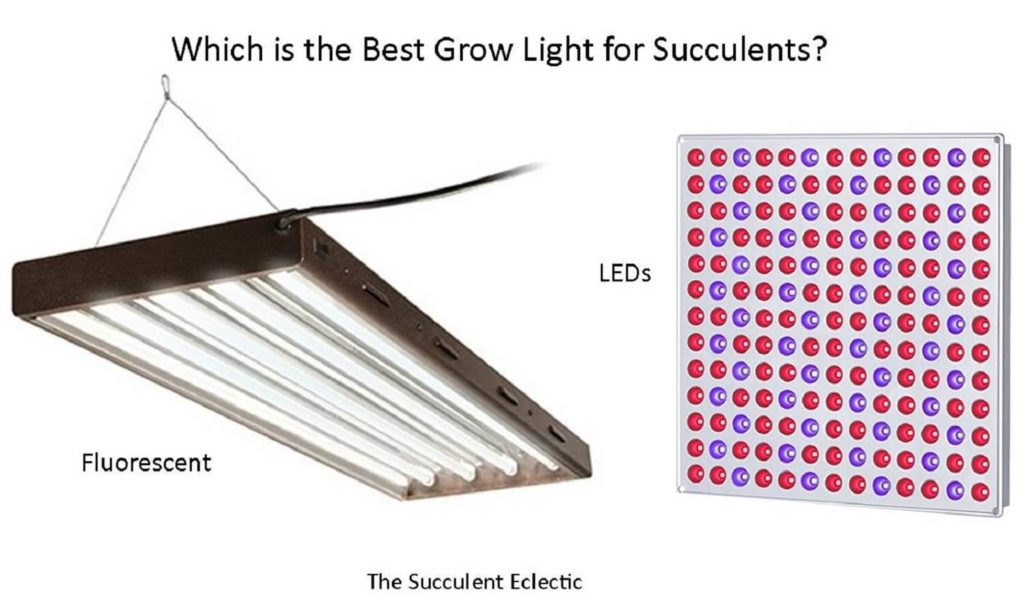
Fluorescent grow lights have been around for decades. Recent improvements in the technology have made them much more energy-efficient than they once were. Modern fluorescent grow light bulbs cost less electricity to run than older models and do not get as hot, which could risk burning your plants. They produce a wide spectrum of light that appears white and can fit well into a room where you will see it. This is the option to use if you want to display your plants indoors.
LED (light emitting diodes) grow lights are a newer development that is far more energy-efficient than fluorescent bulbs. A key difference is that they produce light narrowly focused to produce the best benefits for plant growth. Plants use blue and red light for growth and flowering while reflecting green light (which is why most plants look green). By producing just what the plant actually needs, they save a lot of energy. Plants love this blue and red light combination. But the weird purple glow is not a good look in the home and can be uncomfortable to look at. If your lighting arrangement can or will be confined, LEDs are the best grow lights for succulents.
Regardless of which you select, your succulents’ grow lights will share these common factors:
- Grow lights should be hung a short distance above your plants*. About 6 -12″ for fluorescent bulbs, 18 – 24″ for LEDs, depending upon the fixture.
- Grow lights should be on 10-14 hours a day. Using a timer like this one makes this easy.
- Select lights with low heat output. Some fluorescent lights will burn your plants.
Both fluorescent and LED grow lights will keep your succulents healthy and happy all winter long. You can also use them to do some propagation over the winter, so you can have more succulents come spring!
*Distance of Grow Light from Plants
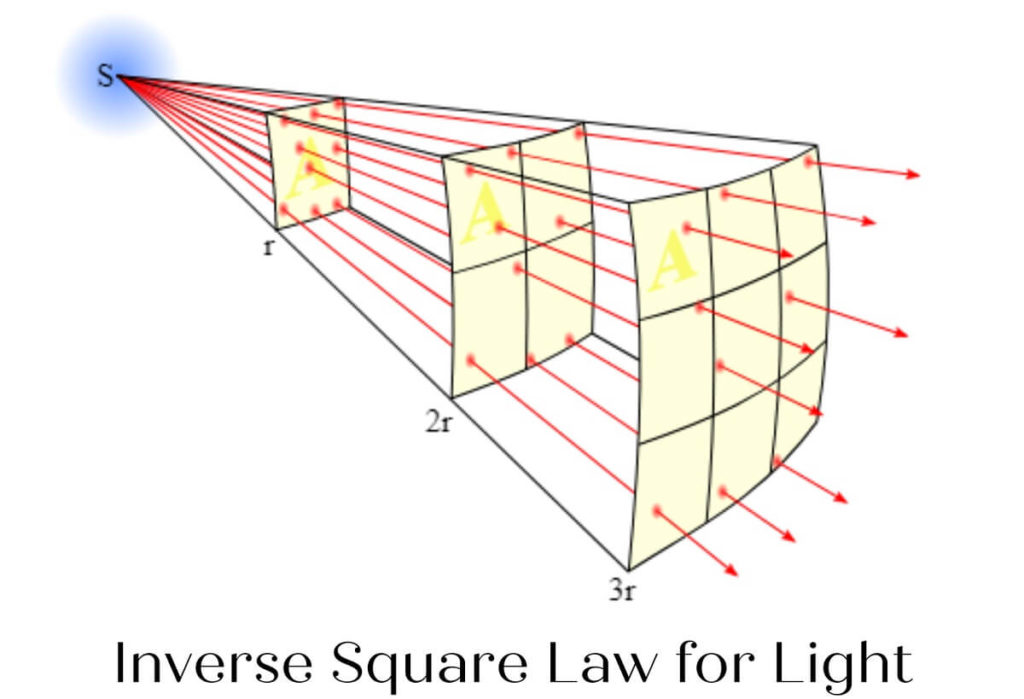
It always surprises people to learn that they need to keep their grow lights so close to their plants. It looks crowded, and you can see the light on the plants at a more reasonable distance, so why not give them a bit more space?
For your plants to benefit from a grow light, they need to be kept very close to the light source, to get a high intensity of the light. The inverse square law for light tells us that the intensity of the light received drops by a square of the distance you are from the source. It works like this: If your plant is 1 foot from the light, and you move it another foot further away, instead of cutting the intensity by one half, it is reduced to one fourth. At a distance of 3 feet, the intensity is reduced to one-ninth.
The benefit your succulents receive from the grow light is cut as the intensity of the light is cut. The single biggest reason people are disappointed with their grow lights is that they set the plants too far away from the light.
Choosing Fluorescent Grow Lights for Succulents
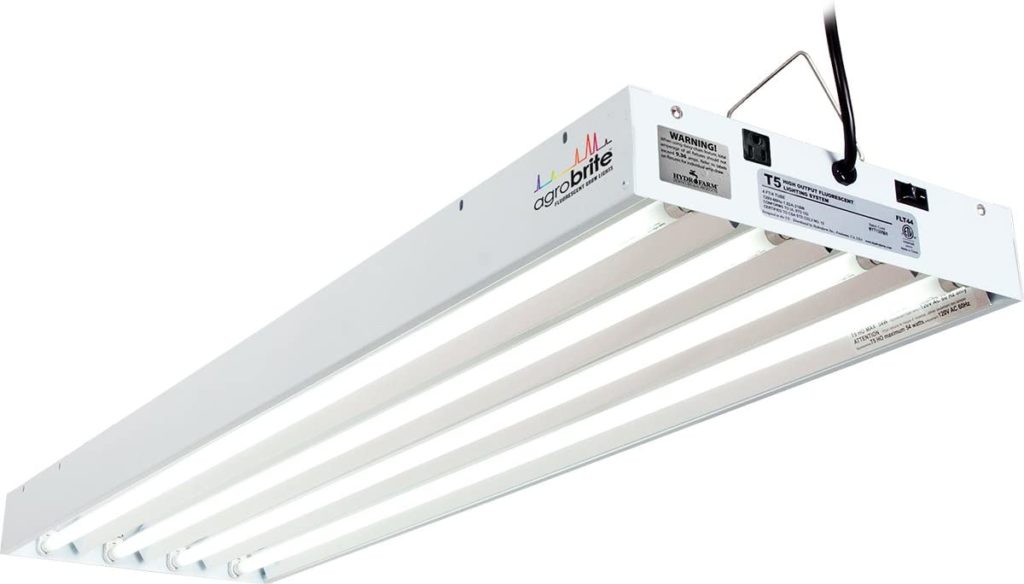
Fluorescent grow lights are your best option when you want to see your succulents while they are indoors. The white light is easy on your eyes while still providing the lighting your succulents need. While regular fluorescent lights will certainly be a benefit to your plants, the grow lights are specifically designed to enhance the spectrum most valuable to your plants’ growth. They are also configured to produce less heat and to shunt the heat away from the bulbs, so there is less risk of burning your plants.
To evaluate which fluorescent grow lights will work best for your succulents, you will need to know:
- Lumens – The brightness of light produced by a bulb is measured in lumens. The more lumens per bulb, the brighter the light it produces.
- Watts – The amount of electricity the light fixture consumes is measured in watts. The more watts per bulb, the more electricity is used.
Figure Costs of Running Fluorescent Grow Lights

You will want to select a lighting feature that provides the most lumens for the fewest watts, in order to go easy on your electricity bill. Fluorescent lights are more expensive to run and will have to be replaced sooner than LEDs. To determine the cost of running your fluorescent grow lights, use this calculation: Watts (of the bulbs) x Hours per day (that you will run it) / 1000. This gives you your kW (Kilowatts per hour). Multiply kW x cost (per kW from your electric bill) x 31 days = cost per month running your fluorescent grow lights.
Hydrofarm is an excellent manufacturer with a great reputation. I really like this fixture shown above. The Hydrofarm FLT44 provides for four 4-foot long high output fluorescent tubes, producing up to 18,800 lumens. It comes with a 5-year warranty. It runs very cool, which is especially important with fluorescent bulbs. This unit can be daisy-chained, to allow multiple lights to be operated by a single outlet. Each unit is a great option to light a section that is 4 feet by 14″. You can hang this light three different ways, but you will need ropes or hooks and chains to hang it.
Choosing LED Grow Lights for Succulents
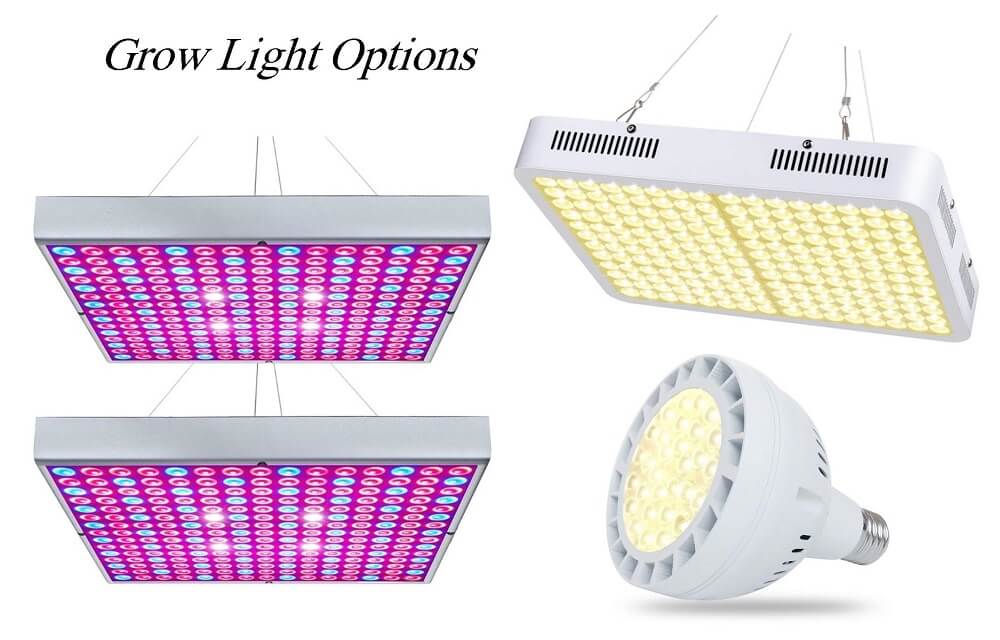
LED grow lights are excellent for your succulents. They produce exactly the light wavelengths your succulents need to grow and thrive. They run cooler and are less expensive to operate than fluorescent grow lights. They also last far longer, without any degradation of the light output. If your viewing comfort is not important, then definitely go with LED grow lights.
Most LED grow lights produce just blue and red lights. The blue light promotes the development of chlorophyll and results in strong, healthy leaves, roots and stems. Blue light is responsible for keeping your succulents compact. Red light promotes blooming and fruit production. Don’t worry – this will not cause your succulents to bloom out of season. But it will make them more capable of producing and supporting blooms come spring and summer. Because many people use grow lights for orchids or vegetables, most LED grow lights have more red lights than blue. If you feel the need to maximize blue light, this LED grow light allows you to adjust the output, with a primarily blue light option.
The model above is the Lifetimetunnel 45W LED Grow Light Panel, an updated and improved version of the ones I bought 5 years ago. I bought 3 fixtures, and my succulents and I have been very pleased with the results. My husband ran these lights every day for 3 years, then for about 6 months a year after that. They continue to work well, with no loss of light. Each fixture comes with a hanger kit, though you might want to lengthen it, depending upon your set up. It has a 15-month warranty. Currently, it is being offered at a buy 2, get 1 free!
White LED Grow Lights – Best of Both Worlds
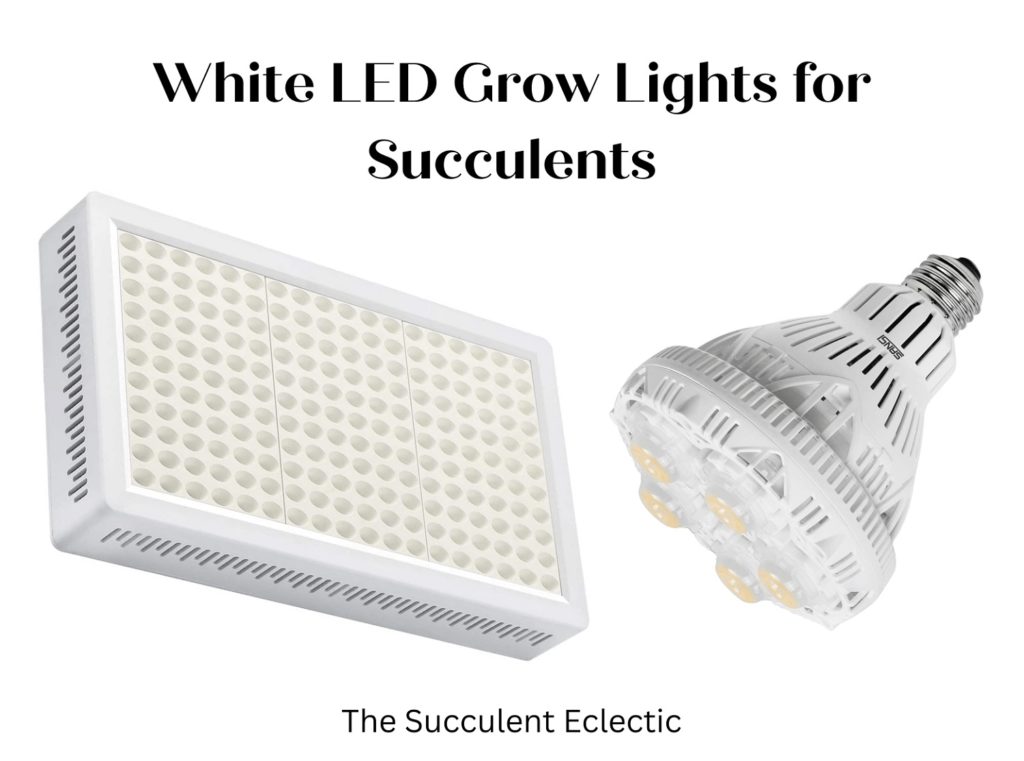
Grow light technology has come a long way just since I purchased my LED grow lights 5 years ago. And the prices have come down dramatically. A full spectrum LED grow light that produces light that appears white may well be the very best of both worlds for succulent growers. The LED lights produce a fuller spectrum of light, that appears white, while still emphasizing the red and blue spectrums that provide the most benefit for your succulents.
The Full Spectrum 600W light on the left, measures 13 x 8 x 2 and lights a 3′ x 3′ area at a height of 24″ above your plants. It comes with a 2-year warranty and an expected lifespan of 50,000 hours. It comes with its own hanging kit. The SANSI 30W LED Plant Light Bulb on the right has a standard E26 lightbulb base and can screw right into any regular fixture. This would be perfect for a single bulb lamp shining onto a handsome specimen plant.
What If You Don’t Use a Grow Light?
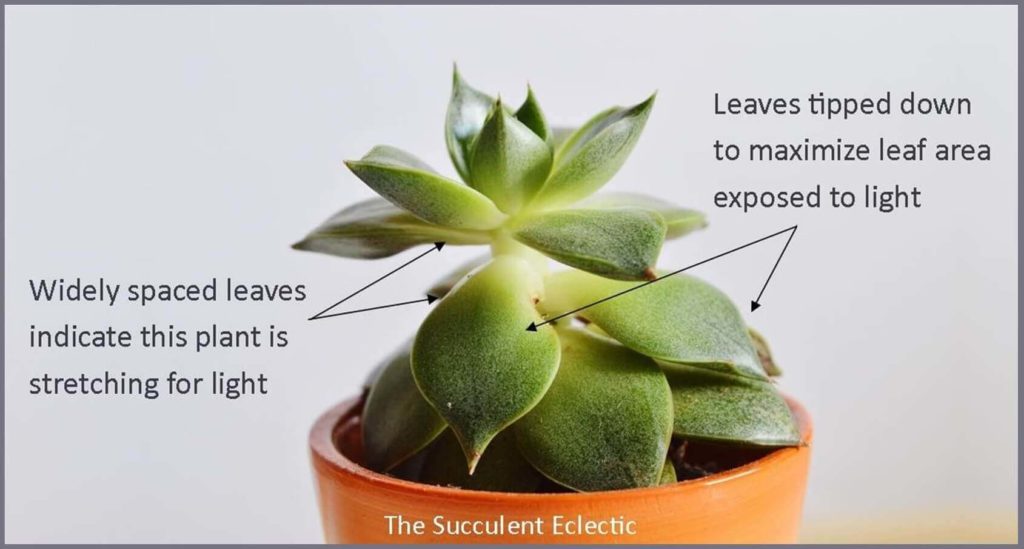
Strictly speaking, you do not need a grow light for your succulents this winter. You might have sufficient light streaming through your windows to keep your succulents healthy and compact. or you might be growing a variety that thrives in low light. But what if you don’t have good lighting, and your succulents are echeveria, aeonium, or another of the many sun-loving varieties? Do you really need a grow light for succulents?
No. You do not absolutely need to use a grow light this winter. Your succulents will stretch without enough light. But as long as the stretching does not become extreme, the plants will survive, which is the main goal. Come spring, you can cut off the tops of your succulents to root as a shorter plant, and pluck leaves for propagation.
The priority is to have your succulents survive the winter, by bringing them indoors to protect them from the cold. If you do use a grow light, come spring, your plants will be larger than they were in the fall. If you do not use a grow light, they will still survive. You will lose some size and time cutting them back and re-rooting your plants, but you will still have your succulents. Using a grow light helps to ensure your succulents are in their best condition come spring.
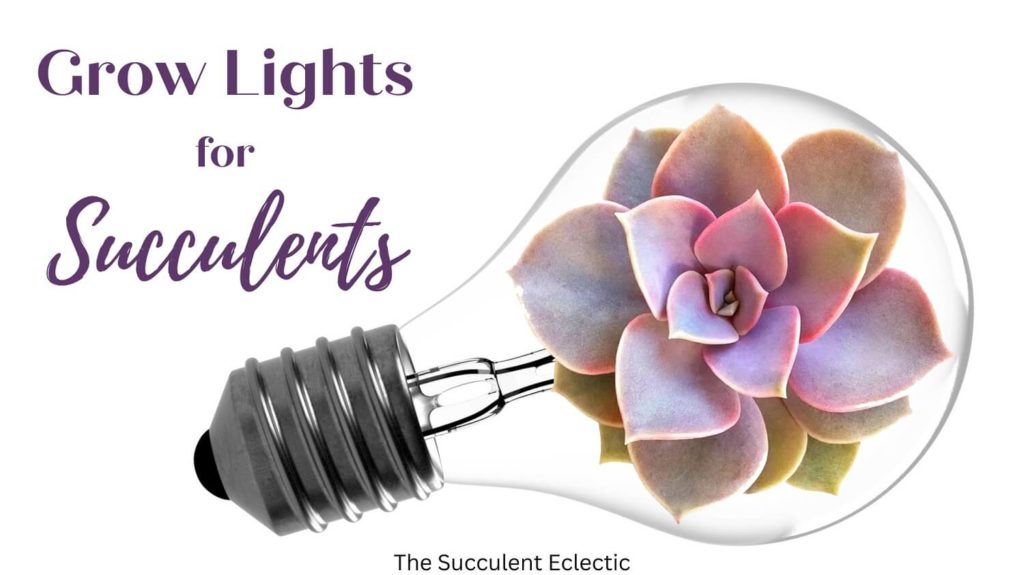
I hope this guide to grow lights for succulents clarified your quest! Remember to keep your plants quite close to the light source. Use a timer to make your lighting both long and easy. And be sure to bring your succulents indoors before the temps drop too cold. Please feel free to contact me with any questions.
Happy gardening!

P.S. For more succulent care information, please subscribe and get my FREE course, 7 Steps to Succulent Success! Thanks!
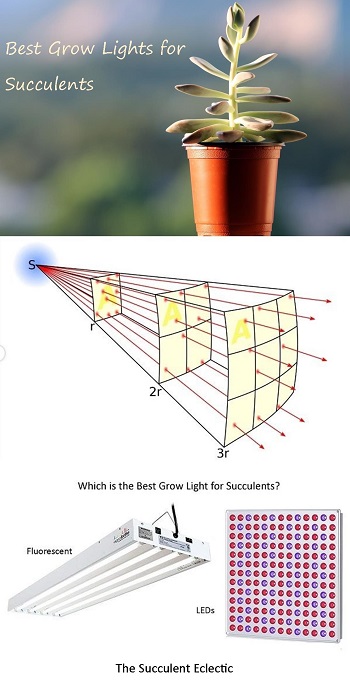
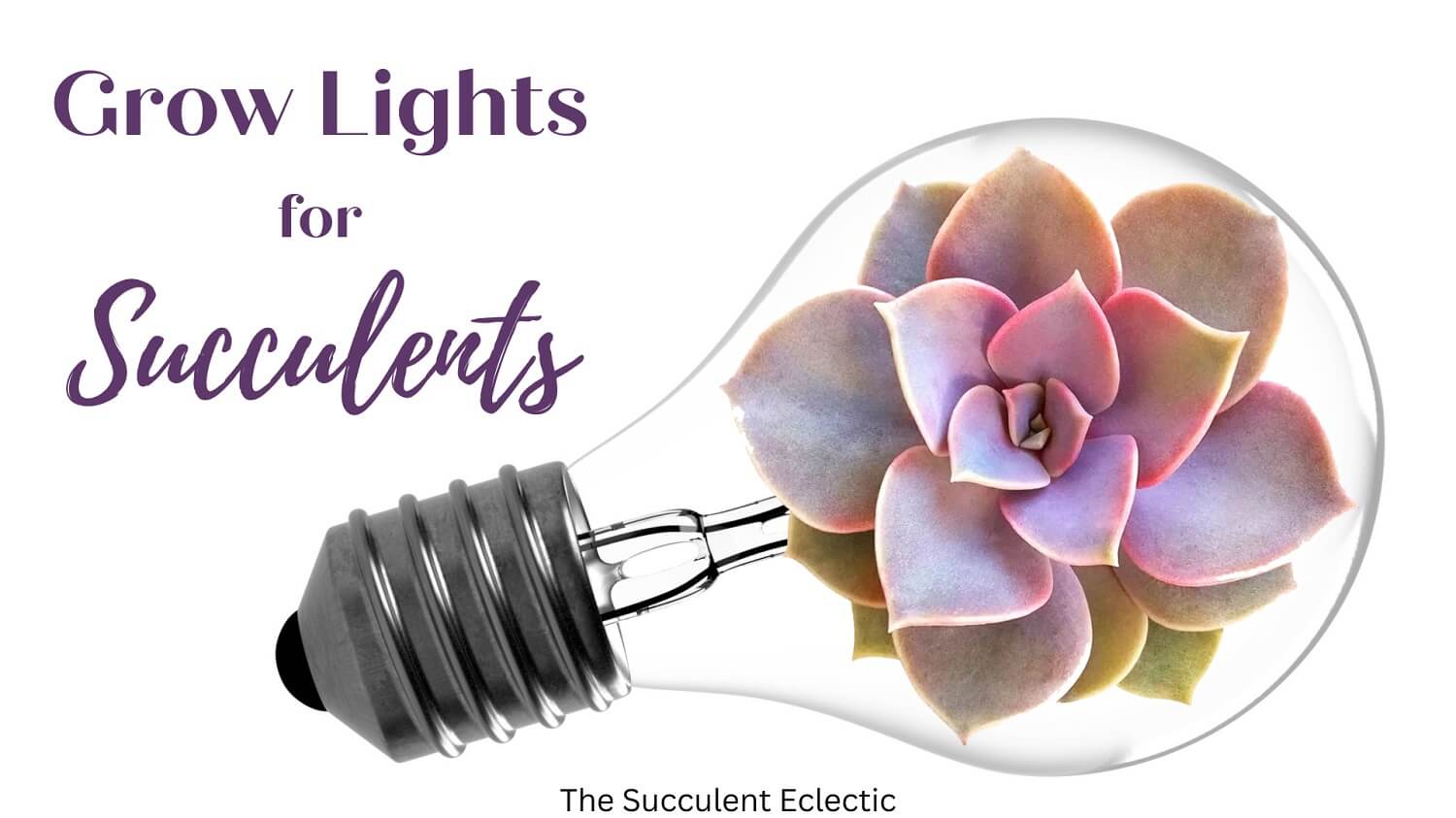
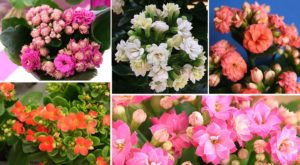
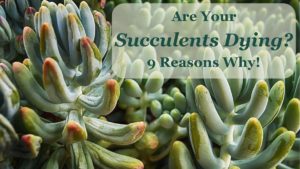
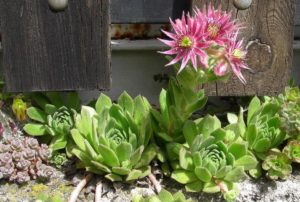
what is a good grow light if I keep them in a shed at night
Hi Rhonda,
IN a shed, your succulents won’t be getting much ambient light, right? There won’t be reading lights on or windows for added sunlight. I would recommend flourescent grow lights like these to give them a flood of the light they need.
~Kat